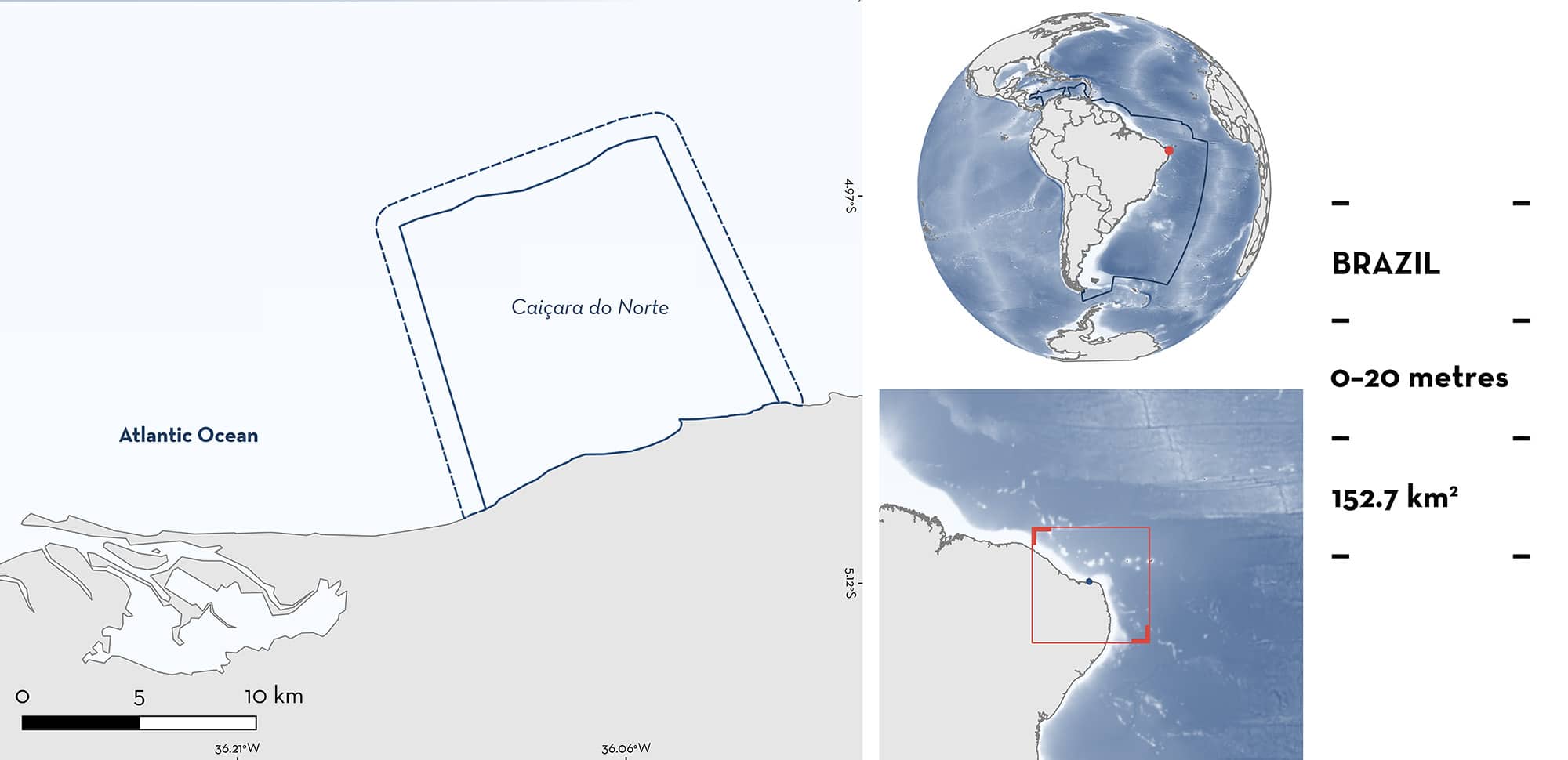ISRA FACTSHEETS
ISRA FACTSHEETS
SOUTH AMERICAN ATLANTIC REGION
Caiçara do Norte
Summary
Caiçara do Norte is located in northeast Brazil. The area is characterised by a narrow shelf with sandy substrates and patches of rocky reefs. It is dominated by two seasons, the rainy season from March–October and the dry season from September–February. Within this area there are: threatened species and range-restricted species (Large-eye Stingray Hypanus marianae).
Download factsheet
Caiçara do Norte
DESCRIPTION OF HABITAT
Caiçara do Norte is located in the Rio Grande do Norte state in northeast Brazil. The area is characterised by a narrow shelf with sandy substrates and patches of rocky reefs (Yokota & Lessa 2006). Two seasons dominate the area, the rainy season from March to October and the dry season from September to February (Gianeti 2011). The area is influenced by the North Brazilian Current (bifurcation of the South Equatorial current) which, along with the topography, creates a high productivity area with turbid waters (Yokota & Lessa 2007). Sea surface temperatures range from 26°C in austral winter to 28°C in autumn (Yokota & Lessa 2006).
This Important Shark and Ray Area is benthic and is delineated from inshore and surface waters (0 m) to 20 m based on the bathymetry of the area.
CRITERION A
VULNERABILITY
One Qualifying Species considered threatened with extinction according to the IUCN Red List of Threatened Species regularly occurs in the area. This is the Endangered Large-eye Stingray (Pollom et al. 2020).
CRITERION B
RANGE RESTRICTED
This area holds the regular presence of the Large-eye Stingray as a resident range-restricted species. This species has been regularly recorded in artisanal fisheries operating in the area (Yokota & Lessa 2007; Costa 2016; Costa et al. 2017, 2022). Between September 2003–August 2004, Large-eye Stingrays were recorded from incidental catches in beach seine nets, shrimp otter trawls, hand lines, and bottom longlines (Yokota & Lessa 2006). In these monthly samplings, 24 individuals were reported, including eight pregnant females (Yokota & Lessa 2006). Near-term embryos were recorded in November–December when postpartum females were also observed (Yokota & Lessa 2007). Between 2013–2014, individuals were sampled at six locations across ~1,100 km of coastline in northeast Brazil using traps, handlines, and by free diving (Costa 2016; Costa et al. 2017, 2022). Of 137 individuals recorded, 25 (18.2%) were observed in Caiçara do Norte in May and June 2014, confirming the regular presence of the species in the area. The other five locations sampled held similar number of individuals, but the maximum number (n = 25) was recorded in Caiçara do Norte and in Abrolhos (~550 km southeast). Morphological and molecular analyses revealed population structure and suggested limited mobility for the species in northeast Brazil (Costa et al. 2017, 2022), highlighting the importance of this area. While Long-eye Stingray has been recorded in other areas across Brazil, Caiçara do Norte stands out (along with Maracajaú and Abrolhos) as one of the few locations where the species has been regularly recorded for ~20 years. This species occurs in the East Brazil Shelf and North Brazil Shelf Large Marine Ecosystems and is only found in the northeast region of Brazil (Costa et al. 2017).
Download factsheet
SUBMIT A REQUEST
ISRA SPATIAL LAYER REQUEST
To make a request to download the ISRA Layer in either a GIS compatible Shapefile (.shp) or Google Earth compatible Keyhole Markup Language Zipped file (.kmz) please complete the following form. We will review your request and send the download details to you. We will endeavor to send you the requested files as soon as we can. However, please note that this is not an automated process, and before requests are responded to, they undergo internal review and authorization. As such, requests normally take 5–10 working days to process.
Should you have questions about the data or process, please do not hesitate to contact us.


